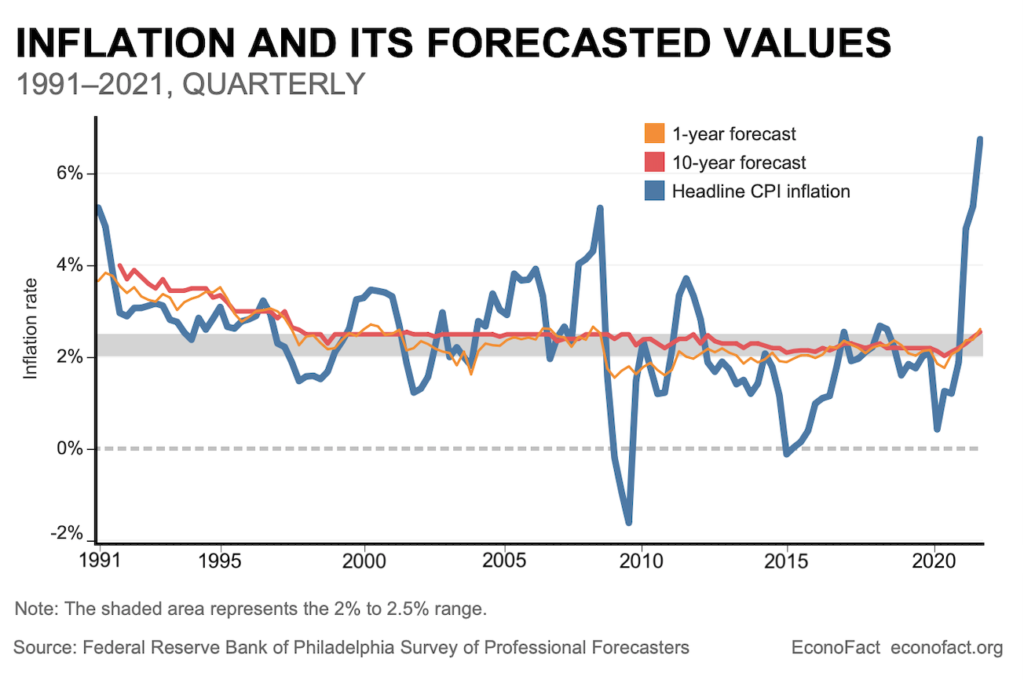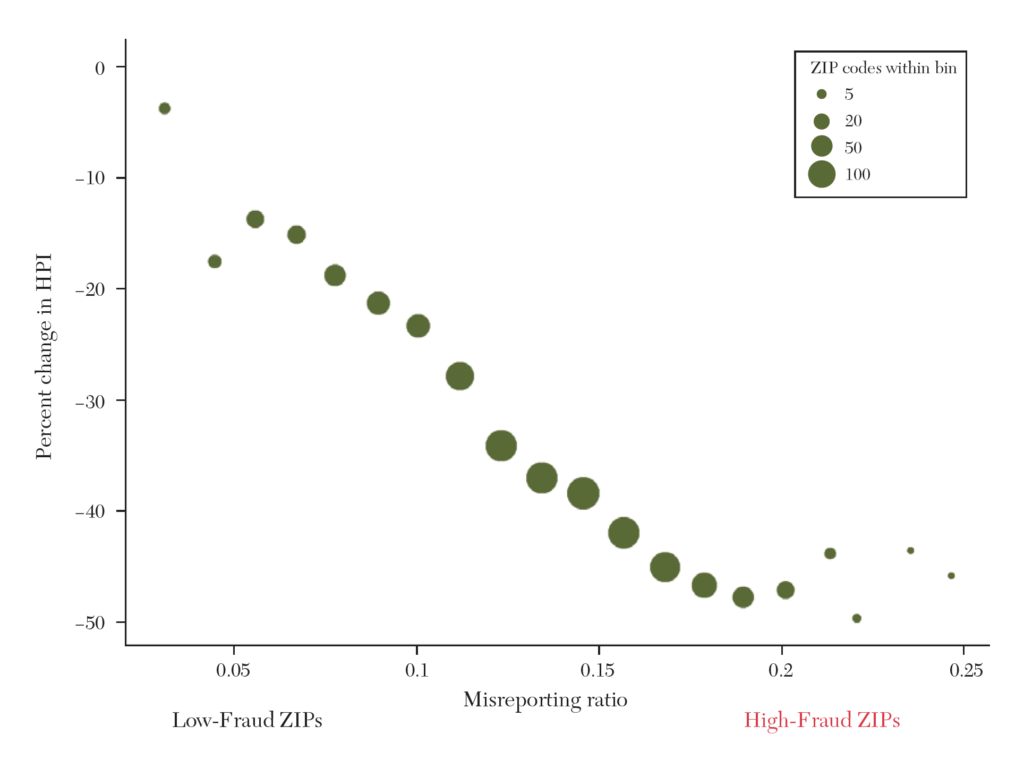Thursday, January 20, 2022
Residential Mobility and Unemployment in the UK
Building upon their earlier work on the same topic, economists Monica Langella and Alan Manning of the Centre for Economic Performance, London School of Economics, further assess spatial differences and trends in internal migration to understand unemployment adjustment in the United Kingdom.
Abstract– “This paper uses UK census data to investigate how unemployment affects residential mobility using small areas as potential destinations and origins and four decades of data. It finds that both in- and out-migration are affected by local unemployment – but also that there is a very high ‘cost of distance’, so most moves are very local. We complement the study with individual longitudinal data to analyse individual heterogeneities in mobility. We show that elasticities to local unemployment are different across people with different characteristics. For instance, people who are better educated are more sensitive, the same applies to homeowners. Ethnic minorities are on average less sensitive to local unemployment rates and tend to end up in higher unemployment areas when moving.”
The paper offers comprehensive coverage of contrasting evidence, which on one hand shows that theoretically migration from economically depressed to booming areas must tackle unemployment, but on the other makes one question if this principle still holds owing to empirical results found from studies conducted in the US labor market (M. Dao, D. Furceri, P. Loungani, 2017). It proceeds to offer reasons to support the claim that migration response to economic booms has been observed to slow down on several instances, and reconciles the diverse range of evidence available from experiences of different countries.
Click here to read the full paper.
Building upon their earlier work on the same topic, economists Monica Langella and Alan Manning of the Centre for Economic Performance, London School of Economics, further assess spatial differences and trends in internal migration to understand unemployment adjustment in the United Kingdom.
Abstract– “This paper uses UK census data to investigate how unemployment affects residential mobility using small areas as potential destinations and origins and four decades of data. It finds that both in- and out-migration are affected by local unemployment –
Posted by at 7:21 AM
Labels: Inclusive Growth
Wednesday, January 19, 2022
Thinking Can Make It So: The Important Role of Inflation Expectations
From ECONOFACT:
“The Issue:
Consumer prices rose 7 percent between December 2020 and December 2021, the third month in a row that this year-to-year inflation rate exceeded 6 percent. This December figure is the largest 12-month increase in 40 years. A central concern now is whether inflation will be transitory or, instead, we are entering a persistently high-inflation period, like what occurred in the 1970s. The proximate causes of current inflation include supply chain disruptions, labor shortages and pent-up consumer spending. But another important source of ongoing high inflation is an expectation of high inflation among households and businesses. How does the expectation of high inflation become self-fulfilling, and what proxies do we have to reflect this inherently unobservable but very important economic variable?
The Facts:
One source of inflation is when spending by people and companies strains the economy’s capacity for providing goods and services. Strains on the economy’s productive capacity can arise because of an increase in demand, constrictions to supply, or some combination of these two factors. Currently in the United States and other developed countries it is the combination of high demand and constrained supply that is feeding inflationary pressures. Demand in the United States was supported through the first year-and-a-half of the pandemic by government support programs. Cash payments to individuals and families under the CARES act of March 2020, the CARES Supplemental Appropriations Act of December 2020 and the American Rescue Plan of March 2021 contributed to sharp increases in personal disposable income. Spending may also have been boosted by low interest rates, which have increased the value of stocks, houses and other assets. Supply has been constrained because of a 2 percentage point drop in the share of the population participating in the labor force (either working or looking for a job).”
Continue reading here.

From ECONOFACT:
“The Issue:
Consumer prices rose 7 percent between December 2020 and December 2021, the third month in a row that this year-to-year inflation rate exceeded 6 percent. This December figure is the largest 12-month increase in 40 years. A central concern now is whether inflation will be transitory or, instead, we are entering a persistently high-inflation period, like what occurred in the 1970s.
Posted by at 6:24 PM
Labels: Macro Demystified
[New Paper] Parameter-efficient deep probabilistic forecasting
New paper by Olivier Sprangers, Sebastian Schelter & Maartende Rijke
Abstract:
Probabilistic time series forecasting is crucial in many application domains, such as retail, ecommerce, finance, and biology. With the increasing availability of large volumes of data, a number of neural architectures have been proposed for this problem. In particular, Transformer-based methods achieve state-of-the-art performance on real-world benchmarks. However, these methods require a large number of parameters to be learned, which imposes high memory requirements on the computational resources for training such models. To address this problem, we introduce a novel bidirectional temporal convolutional network that requires an order of magnitude fewer parameters than a common Transformer-based approach. Our model combines two temporal convolutional networks: the first network encodes future covariates of the time series, whereas the second network encodes past observations and covariates. We jointly estimate the parameters of an output distribution via these two networks. Experiments on four real-world datasets show that our method performs on par with four state-of-the-art probabilistic forecasting methods, including a Transformer-based approach and WaveNet, on two point metrics (sMAPE and NRMSE) as well as on a set of range metrics (quantile loss percentiles) in the majority of cases. We also demonstrate that our method requires significantly fewer parameters than Transformer-based methods, which means that the model can be trained faster with significantly lower memory requirements, which as a consequence reduces the infrastructure cost for deploying these models.
Read more here.
New paper by Olivier Sprangers, Sebastian Schelter & Maartende Rijke
Abstract:
Probabilistic time series forecasting is crucial in many application domains, such as retail, ecommerce, finance, and biology. With the increasing availability of large volumes of data, a number of neural architectures have been proposed for this problem. In particular, Transformer-based methods achieve state-of-the-art performance on real-world benchmarks. However, these methods require a large number of parameters to be learned, which imposes high memory requirements on the computational resources for training such models.
Posted by at 5:37 PM
Labels: Forecasting Forum
New Evidence on the Measurement and Determinants of Poverty in the United States
From a new IMF Working Paper (2022) by Katharina Bergant, Miss Anke Weber, and Andrea Medici.
Summary:
“Using micro-data from household expenditure surveys, we document the evolution of consumption poverty in the United States over the last four decades. Employing a price index that appears appropriate for low-income households, we show that poverty has not declined materially since the 1980s and even increased for the young. We then analyze which social and economic factors help explain the extent of poverty in the U.S. using probit, tobit, and machine learning techniques. Our results are threefold. First, we identify the poor as more likely to be minorities, without a college education, never married, and living in the Midwest. Second, the importance of some factors, such as race and ethnicity, for determining poverty has declined over the last decades but they remain significant. Third, we find that social and economic factors can only partially capture the likelihood of being poor, pointing to the possibility that random factors (“bad luck”) could play a significant role.”
From a new IMF Working Paper (2022) by Katharina Bergant, Miss Anke Weber, and Andrea Medici.
Summary:
“Using micro-data from household expenditure surveys, we document the evolution of consumption poverty in the United States over the last four decades. Employing a price index that appears appropriate for low-income households, we show that poverty has not declined materially since the 1980s and even increased for the young. We then analyze which social and economic factors help explain the extent of poverty in the U.S.
Posted by at 7:39 AM
Labels: Inclusive Growth
Tuesday, January 18, 2022
Fraud and the financial crisis
From a paper by John M. Griffin:
“From the very start of the 2008 housing and financial crisis, close observers suspected widespread fraud lay behind the rapid meltdown in the US mortgage market. But even a decade after the fact, there was little consensus among economists as to whether that was the root cause.
In a paper in the Journal of Economic Literature, author John M. Griffin synthesizes the broad array of literature on the role of residential mortgage-backed securities (RMBS) securitization and finds that conflicts of interest among banks, ratings agencies, and other key players were a key driving force behind the financial crisis.
Griffin says that the process of creating and selling complex financial assets based on home loans was closely linked to the housing bubble—and shot through with malfeasance.
In the run-up to the crisis, underwriters facilitated wide-scale fraud by knowingly misreporting key loan characteristics, credit rating agencies catered to investment banks by inflating their ratings on both mortgage-backed securities and collateralized debt obligations, originators engaged in mortgage fraud to increase market share, and real estate appraisers inflated their appraisals in order to gain business.
As credit was extended to those who could not afford loans, house prices boomed and subsequently crashed when homeowners started defaulting. However, this supply of fraudulent credit was not uniform across US zip codes.
Griffin illustrated variation in mortgage fraud using zip code data from California, which had the greatest number of mortgage originations during the period. Figure 1 from his paper shows that the state’s housing prices decreased as loans from dubious originators increased.
The y-axis is the percent change in the Federal Housing Finance Agency house price index (HPI) per zip code from 2007 to 2010, and the x-axis is the fraction of misreported loans per zip code from 2003 to 2007. The size of each point represents the number of zip codes.
The chart shows a strong negative relationship between misreporting and the home price bust. California zip codes with more than 15 percent fraudulent origination experienced home price decreases of 44.6 percent on average, whereas zip codes with less than 3 percent fraudulent originators only experienced 5.4 percent price decreases.
While other factors such as excess credit and speculation could be drivers, Griffin says that numerous studies since the crisis point toward fraud as a central explanation.”

From a paper by John M. Griffin:
“From the very start of the 2008 housing and financial crisis, close observers suspected widespread fraud lay behind the rapid meltdown in the US mortgage market. But even a decade after the fact, there was little consensus among economists as to whether that was the root cause.
Posted by at 6:48 PM
Labels: Global Housing Watch
Subscribe to: Posts



